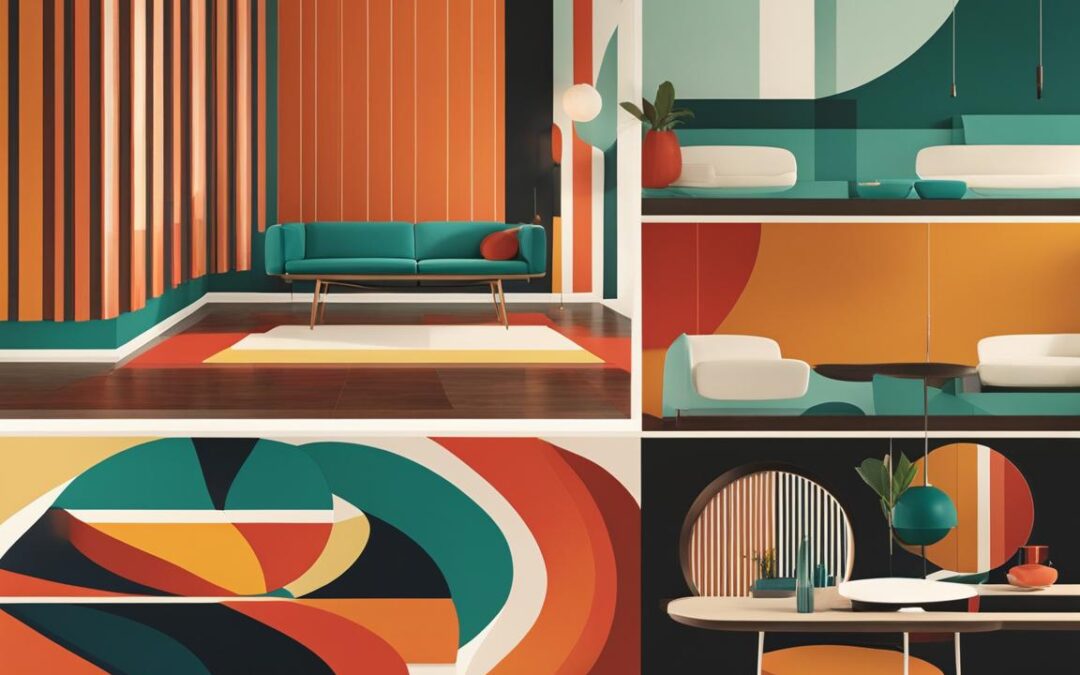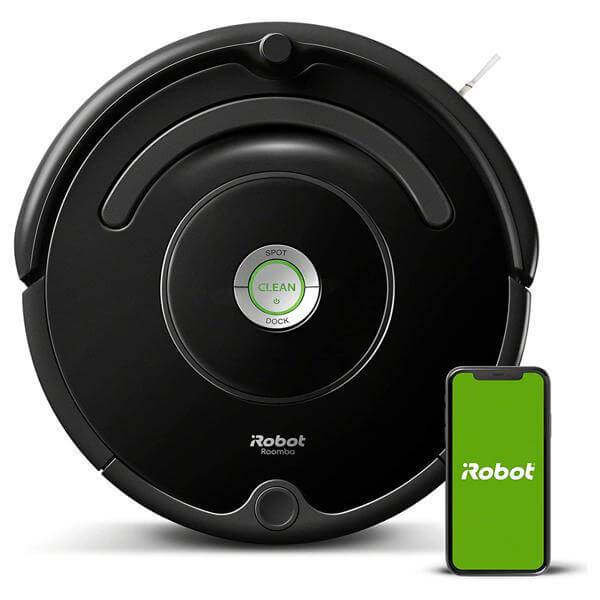Mid-century modern interior design is a popular style that has captivated homeowners, designers, and enthusiasts for decades. In order to fully understand mid-century modern color psychology in design, it is important to explore its definition, historical context, and key characteristics. By delving into these aspects, we can gain a deeper understanding of how color choices can shape interiors and influence moods in mid-century modern living spaces.
Key Takeaways
- Mid-century modern interior design is characterized by simplicity, functionality, and innovative use of materials.
- Understanding the historical context and origins of mid-century modern design can help in selecting the right colors to create a harmonious and visually pleasing environment.
- Clean lines, organic forms, and the integration of indoor and outdoor spaces are key characteristics of mid-century modern design that influence color choices.
- Color psychology plays a significant role in shaping the aesthetics and moods of mid-century modern interiors.
- Creating a mid-century modern color palette involves carefully selecting colors that evoke the desired aesthetic and emotional responses.
What is Mid-Century Modern?
Mid-century modern refers to a design movement that emerged between the 1940s and 1960s, capturing the post-World War II era. It is characterized by simplicity, functionality, and the innovative use of materials. This iconic style continues to captivate homeowners, designers, and enthusiasts due to its timeless appeal and unique aesthetic.
Understanding the role of color psychology in mid-century modern design is essential to creating authentic and cohesive interiors. Colors have the power to evoke specific emotions and transform the mood of a space. In mid-century modern design, the significance of color psychology can be seen in the selection of furniture, decor, and overall color schemes.
The historical context and origins of mid-century modern design play a crucial role in understanding how color choices were influenced by societal changes and technological advancements of the time. The mid-century period was characterized by a shift towards modernism and a celebration of progress. This was reflected in the use of bold, vibrant colors that symbolized optimism and innovation.
“Color and light are the lifeblood of any interior, so it is important to consider the psychological impact of colors in mid-century modern decor. When selecting colors, consider their ability to create visual harmony, evoke desired emotions, and enhance the overall aesthetics of your space.”
In addition, the significance of color psychology in mid-century modern furniture cannot be overlooked. Colors were carefully chosen to complement the clean lines and organic forms of mid-century furniture, creating a harmonious balance between form and function. Vibrant pops of color were often used as accents to add visual interest and create striking focal points within the space.
By understanding the historical context, key characteristics, and the significance of color psychology, you can effectively incorporate mid-century modern design principles into your space. Whether you are selecting furniture, choosing a color scheme, or adding decorative accents, considering color psychology will help you create an authentic and visually pleasing mid-century modern-inspired environment.
Key Characteristics of Mid-Century Modern Interior Design
Mid-century modern interior design is known for its distinct aesthetic and timeless appeal. The key characteristics of this design style heavily influence color choices and create a unique atmosphere in living spaces.
One of the defining features of mid-century modern design is the emphasis on clean lines and organic forms. These sleek and minimalist shapes allow for a sense of openness and simplicity. When it comes to color psychology, this characteristic creates a sense of calm and balance, allowing the colors to stand out and make a statement.
Functionality and practicality are also crucial aspects of mid-century modern design. Furniture and decor pieces are often designed with a purpose, offering both style and usability. When considering the psychological impact of colors in mid-century modern decor, it is important to choose colors that enhance the functionality of the space while maintaining a cohesive aesthetic.
The integration of natural materials is another key characteristic of mid-century modern design. Wood, leather, and other natural elements bring warmth and texture to the space, creating a connection to nature. When selecting colors, it is important to consider the harmonious relationship between the natural materials and the color scheme, ensuring they complement each other effectively.
| Key Characteristics | Psychological Impact |
|---|---|
| Clean lines and organic forms | Creates a sense of calm and balance |
| Functionality and practicality | Enhances usability while maintaining a cohesive aesthetic |
| Integration of natural materials | Brings warmth and texture, creating a connection to nature |
Mid-century modern design is also characterized by a neutral color palette with bold accents. The use of neutral colors such as whites, grays, and beiges as a base allows for versatility and a timeless look. Bold accent colors, on the other hand, add vibrancy and personality to the space. When considering the psychological impact of colors in mid-century modern decor, these bold accent colors can evoke specific emotions and create focal points in the room.
The integration of indoor and outdoor spaces is another distinguishing characteristic of mid-century modern design. Large windows and open floor plans allow for a seamless transition between the interior and exterior, creating a sense of harmony and connection. When selecting colors, it is important to consider how they will interact with natural light and the surrounding outdoor environment, enhancing the overall mid-century modern aesthetic.
Mid-Century Modern Furniture and Decor
When it comes to creating a mid-century modern-inspired space, understanding color psychology is key. By harmonizing colors in your mid-century modern interiors, you can achieve a cohesive and visually appealing design that reflects the essence of this iconic style.
One essential aspect to consider is the timeless appeal of mid-century modern furniture. Known for its clean lines, organic forms, and innovative use of materials, mid-century furniture sets the foundation for your design. Incorporating furniture pieces in neutral tones allows for versatility in color schemes, while bold accents can add a pop of color and personality to the space.
The use of natural materials and textures is another important element in mid-century modern design. Think wood, leather, and textured fabrics, which create a warm and inviting atmosphere. When choosing colors for your decor, consider earth tones that complement the natural materials, such as warm browns, soft greens, and muted oranges.
“Mid-century modern design is all about simplicity and functionality, but that doesn’t mean you can’t have fun with color. By understanding color psychology and using it to guide your choices, you can create a mid-century modern space that is both visually striking and harmonious.” – Design expert
Incorporating colors and patterns in your furniture and decor choices is a great way to infuse your space with mid-century modern style. Geometric patterns, such as those found in iconic wallpaper designs or accent pillows, add visual interest and a sense of retro playfulness. Combine these patterns with a well-coordinated color palette to achieve a cohesive look that embodies the mid-century modern aesthetic.
Remember, the key to using color psychology in mid-century modern design is to create a space that reflects your personal style and evokes the desired emotions. By considering the timeless appeal of mid-century modern furniture, incorporating natural materials and textures, and selecting colors and patterns that harmonize with the overall design, you can create a mid-century modern-inspired space that is both visually captivating and emotionally engaging.
Mid-Century Modern Furniture and Decor
| Furniture and Decor | Color Choices |
|---|---|
| Mid-century modern furniture | Neutral tones for versatility, bold accents for personality |
| Natural materials and textures | Earth tones that complement the materials (warm browns, soft greens, muted oranges) |
| Patterns and accents | Geometric patterns in a well-coordinated color palette |
Creating a Mid-Century Modern Color Palette
When it comes to mid-century modern design, color choices play a crucial role in creating the desired aesthetic and overall feel of a space. By understanding color psychology and the key principles of mid-century modern style, you can effectively create a captivating color palette that enhances the authenticity and visual appeal of your design.
Choosing the Right Colors
Mid-century modern color schemes are characterized by a combination of neutral tones and bold accent colors. Neutrals such as white, beige, or gray create a clean and minimalist backdrop, allowing the vibrant accent colors to stand out. Popular accent colors in mid-century modern design include mustard yellow, burnt orange, teal, and olive green. These colors add warmth, visual interest, and a retro vibe to the space.
Additionally, considering the psychological impact of colors can help you select the right hues for your mid-century modern-inspired space. For example, yellow is often associated with energy and optimism, while blue evokes a sense of calmness and serenity. Understanding these associations can guide you in choosing colors that align with the desired mood and atmosphere of your design.
Creating Visual Harmony
When creating a mid-century modern color palette, it’s important to achieve visual harmony by balancing the use of neutrals and accent colors. One approach is to use the 60-30-10 rule, where 60% of the space is dedicated to a dominant neutral color, 30% to a secondary neutral or mid-tone color, and 10% to the bold accent color. This ratio ensures a balanced and cohesive look.
Furthermore, incorporating geometric patterns is a common practice in mid-century modern design. These patterns can be introduced through wallpapers, textiles, or decorative accessories. They add visual interest and further enhance the retro feel of the space. When selecting patterns, consider the scale and balance of the design to maintain a harmonious aesthetic.
| Neutral Colors | Accent Colors |
|---|---|
| White | Mustard Yellow |
| Beige | Burnt Orange |
| Gray | Teal |
Table: Common Neutral and Accent Colors in Mid-Century Modern Design
By carefully selecting colors, considering their psychological impact, and using geometric patterns, you can create a captivating mid-century modern color palette that enhances the overall design aesthetic and evokes the desired mood in your space.
Essential Elements of Mid-Century Modern Interior Design
Creating a mid-century modern-inspired space involves incorporating essential elements that shape the overall aesthetic and mood of the interior. By understanding the psychological impact of colors in mid-century modern decor and harmonizing colors in mid-century modern interiors, you can create a visually appealing and harmonious design.
The Key Elements of Mid-Century Modern Interior Design
1. Open Floor Plans and Minimalism: Mid-century modern design emphasizes open and spacious layouts, minimizing unnecessary clutter. This element creates a sense of freedom and simplicity, allowing the design elements to shine.
2. Functionality and Practicality: Mid-century modern spaces prioritize functionality and practicality in their design. Furniture and decor choices are not only aesthetically pleasing but also serve a purpose, enhancing the overall usability of the space.
3. Integration of Nature and Natural Light: Bringing nature indoors is a significant element of mid-century modern design. Large windows, skylights, and the use of natural materials invite natural light and create a connection with the outdoors.
4. Clean Lines and Organic Forms: Mid-century modern design is characterized by clean lines and organic shapes. This element creates a sense of simplicity and harmony, contributing to the distinct aesthetic of the style.
5. Use of Iconic Mid-Century Modern Furniture and Decor: Mid-century modern design is renowned for its iconic furniture pieces and distinct decor choices. Incorporating these elements into the design not only adds authenticity but also contributes to the overall mid-century modern aesthetic.
The Psychological Impact of Colors in Mid-Century Modern Decor
Color choices have a profound psychological impact on the overall mood and atmosphere of a space. In mid-century modern decor, specific colors are utilized to evoke certain emotions and enhance the overall design aesthetic. Here are some examples:
- Neutrals: Neutrals such as white, gray, and beige are commonly used as the foundation of mid-century modern interiors. These colors create a sense of simplicity and balance, allowing other design elements to stand out.
- Bold Accents: Mid-century modern design often incorporates bold accent colors to add visual interest and create a focal point. Vibrant shades like mustard yellow, teal, and orange can infuse energy and excitement into the space.
- Earth Tones: Inspired by nature, earthy hues like olive green, warm browns, and rusty reds are frequently found in mid-century modern decor. These colors create a grounded and organic atmosphere, bringing a sense of calm and connection to the natural world.
By understanding the psychological impact of colors and incorporating the essential elements of mid-century modern design, you can create a visually striking and harmonious interior that captures the essence of this iconic style.
In Summary
Understanding Mid Century Modern Color Psychology in Design is crucial to creating authentic and visually appealing mid-century modern living spaces. By exploring the psychology of colors in mid-century design, we can harness the power of color to evoke specific emotions and enhance the overall aesthetic.
Throughout this article, we have delved into the key characteristics of mid-century modern interior design, the significance of color psychology in mid-century modern furniture and decor, and the process of creating a mid-century modern color palette. By incorporating essential elements such as clean lines, organic forms, and the integration of nature, we can create harmonious and visually striking mid-century modern interiors.
Whether you are a homeowner, designer, or simply an enthusiast, exploring the psychology of colors in mid-century design allows you to make informed color choices and create spaces that exude the timeless elegance and functionality that define the mid-century modern style. So, embrace the power of color and embark on your journey to create captivating mid-century modern-inspired spaces.
FAQ
What is mid-century modern?
Mid-century modern refers to a design movement that emerged between the 1940s and 1960s, characterized by simplicity, functionality, and the innovative use of materials.
How does color psychology influence mid-century modern design?
Color psychology plays a significant role in shaping the aesthetics and moods of mid-century modern living spaces. Understanding the psychological impact of colors helps in creating visually appealing and harmonious interiors.
What are the key characteristics of mid-century modern interior design?
Mid-century modern design is characterized by clean lines, organic forms, functionality, the use of natural materials, a neutral color palette with bold accents, and the integration of indoor and outdoor spaces.
How does color psychology influence mid-century modern furniture and decor?
By considering color psychology in mid-century modern furniture and decor choices, designers can create a cohesive and visually appealing space that aligns with the overall mid-century modern aesthetic.
How do you create a mid-century modern color palette?
Creating a mid-century modern color palette involves carefully selecting colors that evoke the desired aesthetic and emotional responses. Elements such as neutrals, earth tones, vibrant pops of color, and geometric patterns are commonly found in mid-century modern color palettes.
What are the essential elements of mid-century modern interior design?
Essential elements of mid-century modern design include open floor plans, minimalism, functionality, the integration of nature and natural light, clean lines and organic forms, and the use of iconic mid-century modern furniture and decor.





